Go into Your Dance

Brief Synopsis
Cast & Crew
Archie L. Mayo
Al Jolson
Ruby Keeler
Glenda Farrell
Barton Maclane
Patsy Kelly
Film Details
Technical Specs

Synopsis
Broadway star Al Howard has a habit of walking out on hit shows. Although Molly, his sister, promises his agent he will never do it again, he is banned from Broadway. Molly tracks Al down in Mexico, where he is on a "binge," and tells him she is through taking care of him. When Molly runs into Dorothy Wayne, a dancer friend, however, she begs Dorothy to form a team with Al because she can get him a job if he has a partner. At first Molly is reluctant, but finally she agrees. It takes some work to convince Al, but he too agrees, and they are a big success in Chicago. Dorothy falls in love with Al and, thinking that he does not return her affection, decides to quit the act. Al asks her to stay, telling her that he plans to open his own nightclub on Broadway. Molly introduces Al to Duke, a gangster who is willing to back the club as a showcase for his wife, Luana Bell, a torch singer who wants to make a comeback. Although Dorothy warns Al about his involvement with Luana, Al continues his flirtation with her. Duke gives Al an additional $30,000 to open the club, but before opening night, Al uses the money to post bond for Molly, who has been arrested on suspicion of murder. When Al turns down a proposal from Luana, she angrily tells Duke the club will not open on schedule, and he sends gunmen to kill Al. At the last minute, Molly is cleared, the necessary money is returned, and the show opens to great applause. Duke tries to call off his gunmen, but jealous Luana does not give them the message. Al finally realizes that he is in love with Dorothy and asks her to dinner. As they step out the door, Dorothy sees the gunmen and throws her body in front of Al. She is wounded and as he holds her, Al tells her that he loves her. The doctor proclaims that she will be fine and Al's club is a huge success.

Director

Archie L. Mayo
Cast

Al Jolson

Ruby Keeler

Glenda Farrell
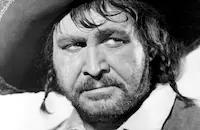
Barton Maclane
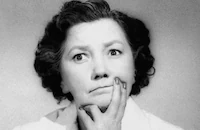
Patsy Kelly

Akim Tamiroff

Helen Morgan
Sharon Lynne
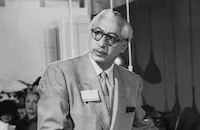
Benny Rubin
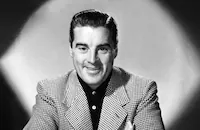
Phil Regan
Gordon Westcott

William Davidson
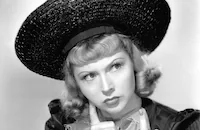
Joyce Compton

Joseph Crehan

Harry Warren
Al Dubin
James Donlan
Robert Glecker
Bobby Connolly
Mary Carr
John Hyams

Edward Keane
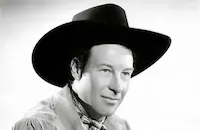
Gordon Elliott

Arthur Treacher
Joyzelle
James P. Burtis
Harold Daniels
Freeman Wood
Milton Kibbee

Ward Bond
Sam Rice
Harry Seymour
Marc Lawrence
Huey White
Sam Hayes
Nick Copeland
Frances Morris
Rosalie Roy
Treva Lawler
Florence Dudley
Theresa Harris
Fred "snowflake" Toones

Henry Kolker
Lita Chevret
Martha Merrill
Crew
Earl Baldwin
Sam Bischoff
Bobby Connolly
Al Dubin
Leo F. Forbstein
Tony Gaudio
Al Green
Ray Heindorf
John Hughes
Harold Mclernon
Orry-kelly
Sol Polito
Harry Warren

Film Details
Technical Specs

Award Nominations
Best Dance Direction
Articles
Go Into Your Dance
Warners excelled at producing musicals and gangster movies separately, but this attempt to combine the two was a bit unusual. Variety wondered in its review if perhaps a lighter approach would have allowed the genre blending to work better: "The two elements blend as far as logic is concerned," the review said, but "since the gunmen business is a vital part of the plot and could not have been disposed of with a once-over-lightly, a satirical approach rather than a serious one might have been a better solution." Still, the trade paper declared the film to be "a vigorously directed and agreeably entertaining musical picture. Besides everything else it has Al Jolson in top form, plus a nifty set of songs."
Jolson is indeed at the top of his talent here, performing songs like "Mammy, I'll Sing to You", "Latin from Manhattan" and "About a Quarter to Nine," all by songwriters Harry Warren and Al Dubin. The staging of "Latin from Manhattan" even won an Oscar® nomination for Bobby Connolly's great dance direction. The public ate it up, and Go Into Your Dance was a modest hit. There were to be no more Jolson-Keeler movies, however, due entirely to Jolson's legendary ego.
Jolson was extremely competitive and could not bear not being Number One all the time, even at the expense of his wife. But the truth was that by the mid-1930s, Keeler was a star in her own right, and Jolson, nearing 50, was slipping into something less than top-star importance. For Jolson, anything less was failure.
Even before Go Into Your Dance, the Jolsons' overzealous professional competition was straining their marriage. Harry Warner suggested that they work together instead of competing against each other, though his real reason for saying so was that "Keeler's name was needed to put the new Jolson picture over" (according to author Herbert Goldman). When Jolson agreed to try it, the Warners' publicity machine attempted to paint the Jolsons' marriage as nothing less than idyllic. In truth, author Michael Freedland has written, "there were occasional glimpses of pain on Al's face when he saw Ruby getting the close-ups he thought were his due." Furthermore, Jolson constantly gave Keeler direction, which was a constant frustration to Archie Mayo, the film's director.
Go Into Your Dance turned out to be a success but Jolson lamented, "They don't want to see me anymore. They want us." That was it for the Jolsons as far as co-starring. Inevitably, the marriage would soon collapse. Although the couple adopted a baby just before this film was released, Keeler left Warner Bros. in 1937 at the insistence of Jolson, and by 1940 they were divorced.
Despite the off-screen troubles of Jolson and Keeler, Go Into Your Dance is worth watching and offers a rare chance to see Helen Morgan, the torch singer of 1920s clubs and stage. By now her alcoholism was really taking its toll, but she still performs her one ballad in the movie, "The Little Things You Used To Do," quite poignantly while sprawled across a piano (a typical pose for her). This is one of the famous Broadway star's very few movies. A year later she would be featured in her best-known and final picture, Show Boat (1936). Five years later she was dead, from cirrhosis of the liver.
Another famous stage performer of the era to be seen in this movie is Patsy Kelly, who had previously played opposite Jolson on Broadway in Wonder Bar. Songwriters Warren and Dubin also appear here in bit roles as themselves. And look fast for Ward Bond.
Producer: Samuel Bischoff
Director: Archie Mayo
Screenplay: Bradford Ropes (novel/story), Earl Baldwin
Cinematography: Tony Gaudio
Film Editing: Harold McLernon
Art Direction: John Hughes
Music: Harry Warren
Cast: Al Jolson (Al Howard), Ruby Keeler (Dorothy Wayne), Glenda Farrell (Molly Howard), Barton MacLane (Duke Hutchinson), Patsy Kelly (Irma Knight), Akim Tamiroff (La Cucaracha Cantina).
BW-90m.
by Jeremy Arnold
Sources:
Pearl Sieben, The Immortal Jolson
Michael Freedland, Jolson
Herbert G. Goldman, Jolson: The Legend Comes to Life

Go Into Your Dance
Marc Lawrence (1910-2005)
Born Max Goldsmith on February 17, 1910, in the Bronx, Lawrence had his heart set on a career in drama right out of high school. He enrolled at City College of New York to study theatre, and in 1930, he worked under famed stage actress Eva Le Gallienne. Anxious for a career in movies, Lawrence moved to Hollywood in 1932 and found work immediately as a contract player with Warner Bros. (an ideal studio for the actor since they specialized in crime dramas). He was cast as a heavy in his first film, If I Had a Million (1932). Although his first few parts were uncredited, Lawrence's roles grew more prominent: a sinister henchman in the Paul Muni vehicle in Dr. Socrates (1935); a conniving convict aiding Pat O'Brien in San Quentin (1937); a menacing thug stalking Dorothy Lamour in Johnny Apollo (1940); the shrewdly observant chauffeur in Alan Ladd's breakthrough hit This Gun For Hire (1942); and one of his most memorable roles as Ziggy, a fedora wearing mobster in the Bogart-Bacall noir classic Key Largo (1948).
Lawrence, when given the opportunity, could play against type: as the prosecuting attorney challenging Tyrone Power in Brigham Young (1940); a noble aristocrat in the Greer Garson-Walter Pidgeon period opus Blossoms in the Dust; and most impressively, as a deaf mute simpleton in the rustic drama The Shepherd of the Hills (both 1941). Better still was Lawrence's skill at comedy, where his deadpan toughness worked terrifically as a straight man against the likes of Joe E. Brown in Beware Spooks (1939); Abbott and Costello in Hit the Ice (1943); Penny Singleton in Life with Blondie (1945); and Bob Hope in My Favorite Spy (1951).
After that, Lawrence's career took a turn downward spin when he was labeled a communist sympathizer during the Hollywood witch hunts of the early '50s. He was exiled in Europe for a spell (1951-59), and when he came back, the film industry turned a blind eye to him, but television overcompensated for that. Here he played effective villains (what else?) in a series of crime caper programs: Peter Gunn, Johnny Staccato, The Untouchables, Richard Diamond, Private Detective; and eventually made a welcome return to the big screen as a returning exiled gangster in William Asher's underrated mob thriller Johnny Cool (1963).
It wasn't long before Lawrence found himself back in the fray playing in some big box-office hits over the next two decades: Diamonds Are Forever (1971), The Man with the Golden Gun (1974), Marathon Man (1976), Foul Play (1978); and The Big Easy (1987). Sure he was cast as a gangster, but nobody could play a rough and tumble mob boss with more style or conviction.
Interestingly, one of his finest performances in recent years was in television, as a severely ill old man unwilling to accept his fate in a fourth season episode of ER (1997-98). His last screen role was just two years ago, as a nimble minded VP in Looney Tunes: Back in Action (2003).
In 1991, Lawrence published a memoir about his venerable career, Long Time No See: Confessions of a Hollywood Gangster that received much critical acclaim. He has also developed a cult following due to his appearances in such offbeat items as From Dusk to Dawn and Pigs aka Daddy's Deadly Darling, the 1972 horror film he directed and starred in with his daughter Toni. He is survived by his wife, Alicia; two children from a previous marriage, Toni and Michael; and a stepdaughter Marina.
by Michael T. Toole
Marc Lawrence (1910-2005)
Quotes
What happened?- Sadie Howard
Well, man meets girl, girl meets husband, husband meets man, man meets sidewalk.- Dorothy Wayne
Trivia
Robert Florey directed added scenes and retakes for the film.
Notes
The Variety review credits Sol Polito with photography. Variety notes that this was the first and only screen pairing of Al Jolson and his wife, Ruby Keeler. Modern sources add that Jolson refused to make any more films with Keeler. According to modern sources, Robert Florey directed added scenes and retakes for the film. Dance director Bobby Connolly received an Academy Award nomination for his work on the "Latin from Manhattan" number in this picture, and for the "Playboy from Paree" number in Broadway Hostess. Go into Your Dance was released in Britain as Casino de Paris.

Miscellaneous Notes
Released in United States 1935
Released in United States 1935















